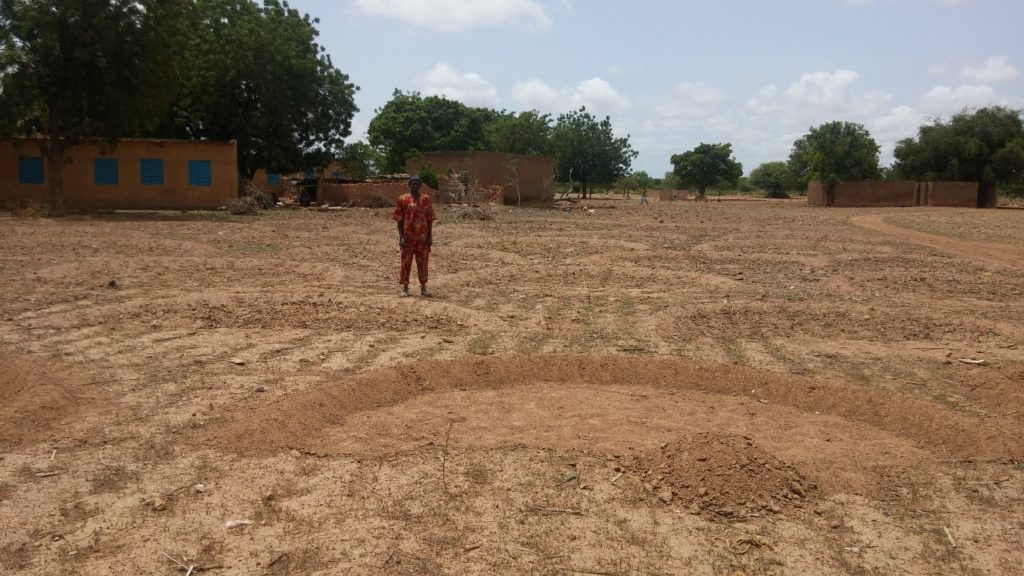
Dry-Land Farming Techniques Trap Moisture
Even though the Burkina Faso Gnagha program just started in April of this year, participants in ten villages are hard at work readying their fields in advance of hoped-for rains and planting.
In this picture, a farmer employs a dry-land conservation farming technique that retains morning dew that will allow his crop to sprout and grow. Boaboare shows his field of prepared “half moons” that will cause heavy rains to soak into the soil instead of sliding over parched ground. Another farmer, a woman named Sermayé, digs zai pits to fill with compost and seeds and trap rushing waters. As more plants grow, it will be easier to hold available moisture and prevent soil erosion, and there will be less rainwater lost due to runoff.
This program improves food security and nutrition in an increasingly dry climate. Training in conservation agriculture, grain production and vegetable gardens will give participants sustainable farming practices they can rely on, making it possible for them to stay on their farms instead of migrating for work. As they increase the variety of food they grow and are able to earn incomes, participants will be able to experience the dignity of living healthier, more productive lives.
Burkina Faso Gnagha
Led by Mennonite Central Committee
12/18
